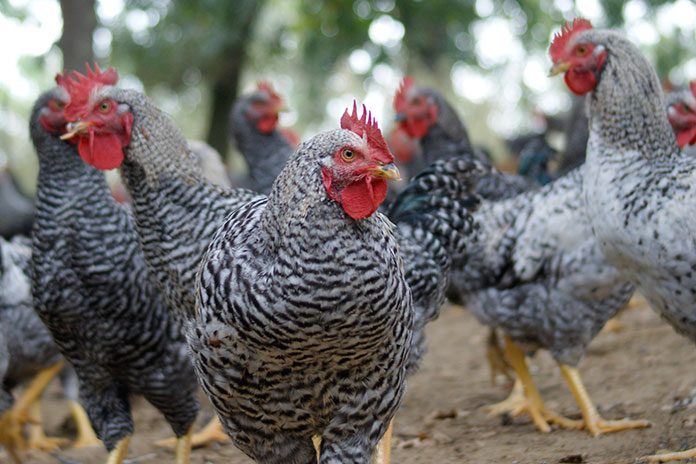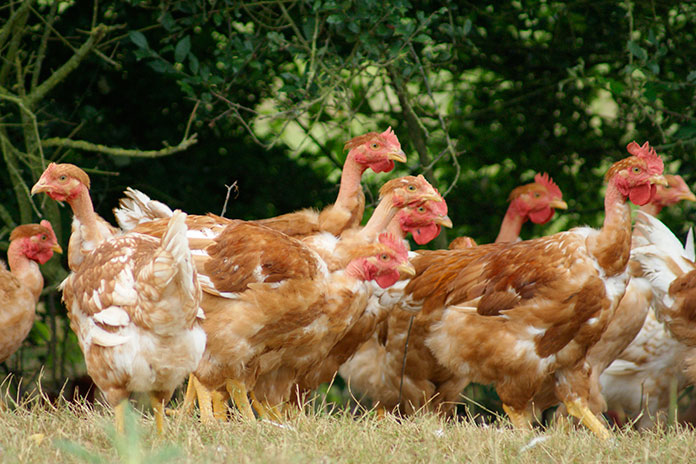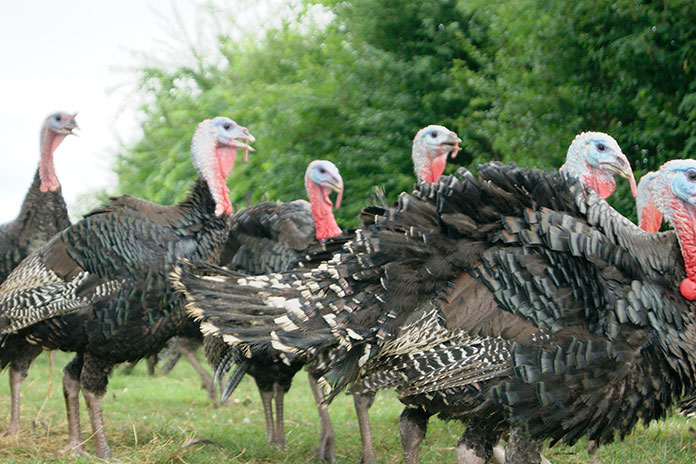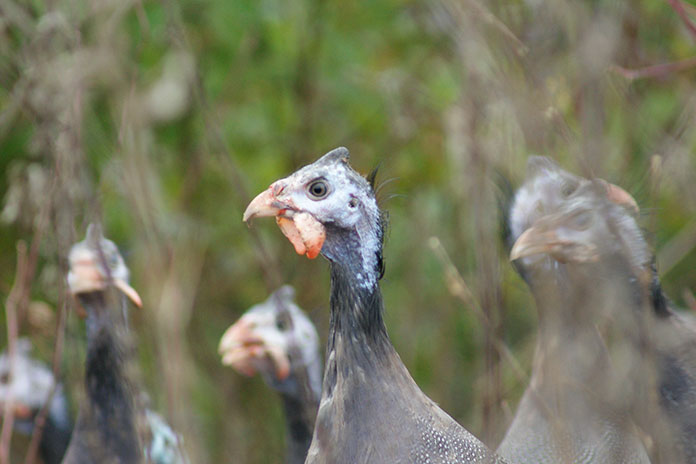
The French cuisine is well-known and respected for more than two centuries for the way it has embraced the different types of poultry breeds, the French explorers discovered around the world. It is easy to state that today there is no other market in the world where the market share of traditional certified poultry is as high as in France and has been for decades.
In France, traditional poultry has emerged into three main market segments and two niche ones (Organic and Specific Origin). All five segments are regulated by French government and embedded in different specialized organizations. The main segments are commercial poultry production, certified poultry production and Label Rouge certification. To give an idea of its size: in the broiler market, certified (8%) and Label Rouge poultry production (15%) account for 23% of the total market.
To protect the heritage and tradition of the old poultry breeds, France introduced the Label Rouge certification system in the 1960. Since that year, Label Rouge poultry is reared using traditional, free-range production methods based on an official Label Rouge specification approved by the French public authorities. Label Rouge is a production method that is respectful of animal welfare and protects the environment. Today, there are about 200 different Label Rouge products being produced.

Certified poultry
In 1991, as an answer to the growing demand for slower growing birds, but not to the standard of Label Rouge, the first certified broiler was introduced on the French market. The new certification system is still in place today and is especially strict on the days to market (56 days). The final product derives from crossing a slow growing female with a faster growing male.
Since a few years, more markets are interested in slower growing poultry. This is causing ‘new standards’ to arise, different in each country.
The Dutch ‘chicken of tomorrow’ concept illustrates the current market dynamics. Triggered by the animal welfare star system, in place in the Netherlands since 2007, animal welfare activists have pressured national retailers to adopt a ‘new standard’ chicken with slower growth. The Dutch Animal Welfare Association, founder of the star system, based the new standard on a maximum daily gain of 50 grams. In the near future, all chicken meat available in Dutch supermarkets will be sourced from ‘one star’ animal welfare farms.
Germany developed its ‘Animal Protection Program’ in 2011 for broilers and pigs. Slightly different from the Dutch system, the German system is built around one and two-star animal welfare.
Both categories demand a growth rate of less than 45 grams, but the stocking density in combination with maximum farm, barn and pen sizes is what separates the two.
And in 2008, with help from Whole Foods Market, a US based food grocer, the Global Animal Partnership (GAP) was born. GAP was set up to create new welfare standards for suppliers and they decided that slower growing is equal to or less than 50 grams of gain per day averaged over the growth cycle.
In the future, with the developed countries to lead, every country or even possible every retail or foodservice organization will define its own ‘new standard’. There are many factors to differentiate the standards. Whether it is housing conditions, stocking density, robustness, tradition, daily growth, climate, antibiotic usage, health standards or simply taste, the set of the standards will depend partially upon the existing system in one country and heavily on the perception of ‘animal welfare’ by society. And next to that, copies of the ‘Label Rouge’ certified poultry production will also find its way to various countries.
Genetic impact
Adjusting a system, changing one or multiple factors, has an impact on poultry genetics. Or to put it the other way around, focus traits is important to make the right combination work. There are multiple ways to go about reaching the right combination of female and male to fit any ‘new standard’. Working with a poultry genetics company with a large portfolio of slower growing birds will help create the solution.

Breeding for tradition and taste
Hendrix Genetics acquired the activities of the family Grelier in 2012. Mainly interested in the turkey distribution part to grow its European market share, they discovered during the merger the full portfolio of traditional turkeys, guinea fowl, broilers and layers that were part of the Grelier company.
Clearly seeing the growing trend for tradition and taste, the company decided to create a separate business unit for Traditional Poultry. And from the onset the ambition was to become a specialized breeder in this segment.
Hendrix Genetics invested heavily in the professionalization of its breeding activities and facilities in traditional turkeys. They are developing this market successfully in North America. Simultaneously and part of its strategy, the company started guinea fowl breeding.
With the strategic partnership with SASSO, Hendrix Genetics made a logical step in 2016 into traditional broilers, the largest segment in traditional poultry. SASSO has been involved in the breeding of traditional broilers since the late 60s when the first ‘Label Rouge’ poultry was created. To provide the producers with French day old chicks, SASSO was founded, dedicated to the selection of traditional coloured lines: red chickens, naked-neck yellow skin, red with white skin, naked-neck black feathers and so on.
At present, Hendrix Genetics operates a balanced breeding program with four traditional poultry species (broilers, turkeys, laying hens and guinea fowls) in which they select for the traits that are becoming more and more important to consumers. With its mix of lines and breeds, the company can create any solution to produce the desired traditional poultry.


















